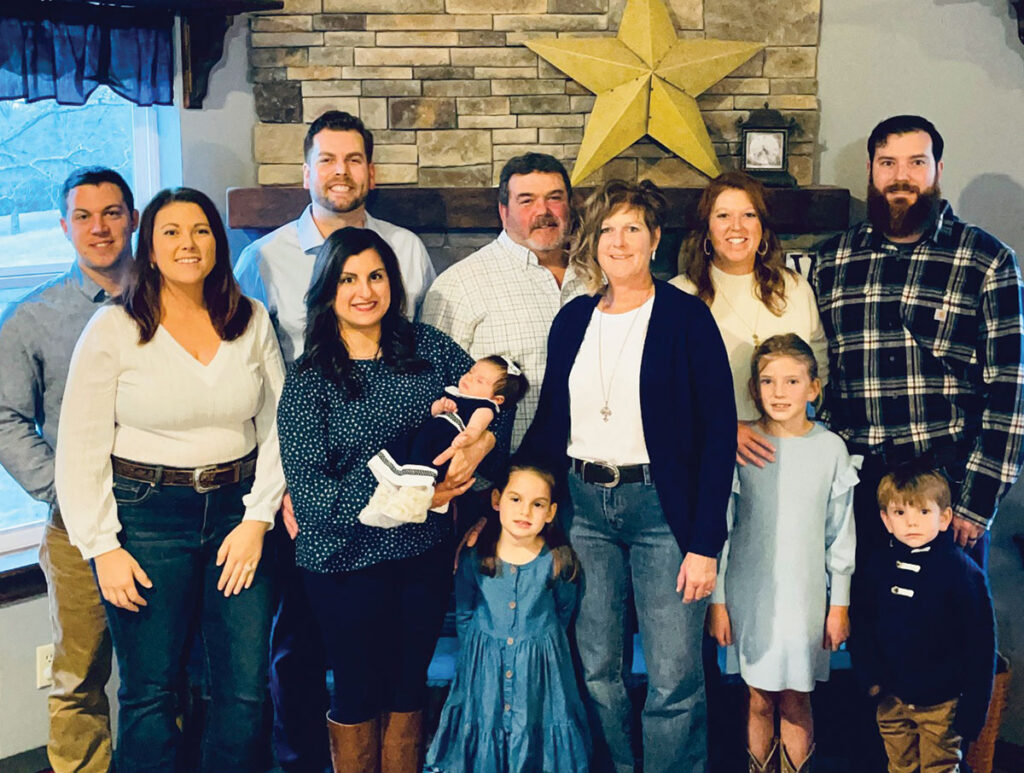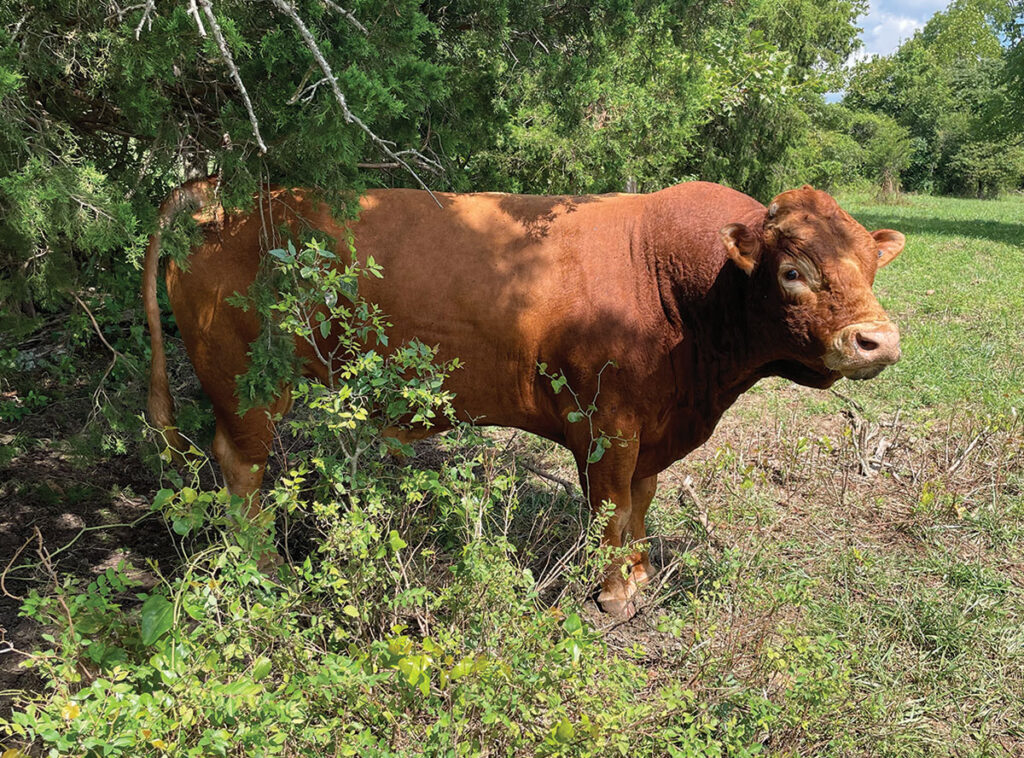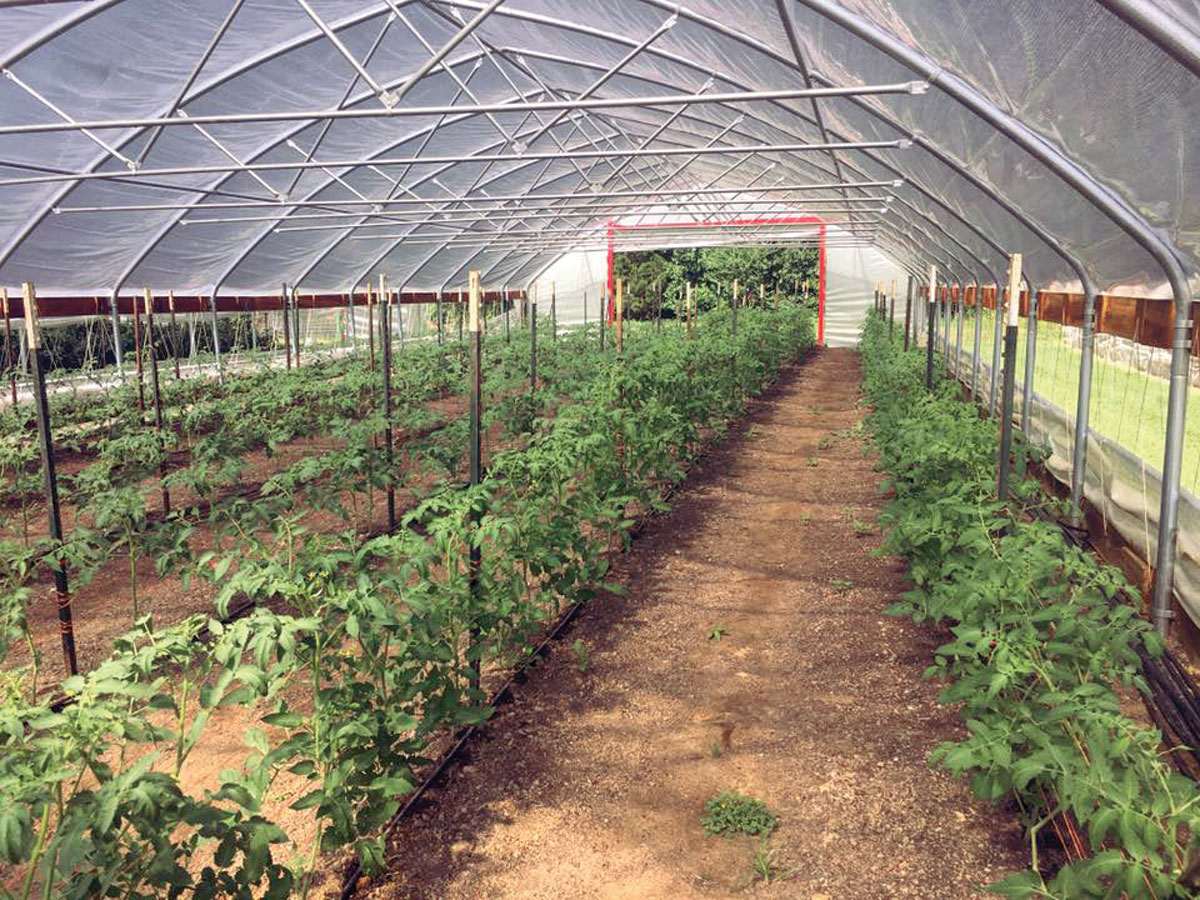
Rodney and Lisa Alderson took a break from the cattle industry, but started again after moving to the Ozarks
ZANONI, MO. – The Ozarks is as cattle country, but that isn’t what drew Rodney and Lisa Alderson to the region.
“It was striped bass,” Lisa said with a laugh. “On one of his business trips, Rodney was in a gas station and saw a mounted striped bass. He had never heard of striped bass and thought it was a joke. He went back to the hotel room, Googled it, found out it was a real fish, and started looking for places to go bass fishing, which brought us to Lake Norfolk.
“We were coming to Mountain Home (Ark.) eight, 10 times a year, so we bought a boat, then a bigger boat. We just liked the area, so we decided this is where we want to retire.”
Bass might have brought the Aldersons to the Ozarks, but they had additional plans for their new home.
The family backgrounded as many as 500 head and had more than 100 head of sheep at their Bellflower, Mo., farm for several years, but life changes.
“Our two oldest children were graduating high school and going to college, so we were losing some of our workforce,” Lisa explained. “Rodney was traveling more with his job, so we decided to sell our farm and move closer to St. Louis. We still had one child at home, and decided when she graduated high school we would go back to farming.”
The couple settled in Zanoni, Mo., just north of the Arkansas line in Ozark County, in 2013, and began to rebuild their cattle operation, opting to go with cow/calf pairs, primarily Angus/Simmental. They have grown their operation to more than 780 acres at three farms.
“The problem now is that we have too many cattle and not enough time to go fishing,” Lisa said.
As they built their herd, Rodney discovered Akaushi, one of four Wagyu breeds.
“We wanted to get into the niche market,” Lisa said. “To be a cattle farmer, any kind of farmer, it’s hard to make money, much less a living, so Rodney liked the aspects the Akaushi brought to the herd. It’s called the ‘Emperor’s Breed,’ so if the emperor eats it, it has to be good.”
The Akaushi herd began in 2017 at Alderson Farms Akaushi with two purebred bulls and a purebred female, which produced a heifer calf. Rodney and Lisa still have their original Akaushi cow, and at the age of 17, she produced a bull calf in October.
“She was the beginning,” Lisa said. “We also purchased a cow and heifer with top EPDs and polled semen. We are also in the process of purchasing two polled bulls.”
The Alderson herd now consists of about 200 purebred and crossbred Akaushi, and commercial cattle.
Alderson Farms Akaushi offers beef in wholes, halves, quarters and by the cut.
Their commercial females produce calves for their beef program, including F1 and F2 crosses, with Akaushi bulls.
“There is a big difference between Akauski and the beef we had before,” Lisa said. “The beef we had before, family and friends loved it, then they couldn’t wait to buy some of the Aßkaushi.”
The Alderson herds calve in spring and fall, and calves are weaned at about 5 to 6 months of age. Cattle remain on pasture at Alderson Farms Akaushi and are offered some grain.
“We do creep feed some of the calves, depending on their pens. We watch the pens to see which ones need extra nutrition,typically the calves of the younger mommas or older cows. We also bucket-feed cows daily or every other day. The calves, when weaned, will be bucket-fed a little grain twice a day. Prior to weaning, they will get their vaccinations, band any bull calves (from the crossbred herd), and then a few weeks later, they are weaned.
“Typically, calves are bucket fed for six weeks before we start them on full feed. At this time, we will sort heifers and steers.”
Animals receive a free-choice, corn-based custom mix, and calves grow slowly.
“The grain helps the marbling,” Lisa said. “We process at about 1,200 to 1,300 pounds, liveweight, so we have calves that are 20 months old. They also have grass, hay and access to fresh water. I try to take good care of them. They aren’t on a feeding floor or a dry lot.”
She and Rodney keep what cross calves they need for their meat program, typically about 20 head a year. Excess calves are sold back to HeartBrand Cattle Company, the breeder from which they purchased their original Akaushi. The Texas-based ranch buys calves from fellow Akaushi breeders to be marketed under the ranch’s Certified Akaushi Beef label. The Aldersons also sell calves to a buyer in the Springfield, Mo., area.
Akaushi cattle sell at a premium, but the Aldersons try to keep their prices affordable.
“That’s something that is very important to my husband and I,” Lisa said. “Not everyone has the money to get an expensive steak, but I think everyone deserves to have an expensive steak. It might not be on the weekly menu, but who doesn’t enjoy a good-tasting steak?”
Being a pasture-based operation, Lisa said they continually work to improve forages, including eradicating undesirable plants and incorporating new forages.

“Rodney is always seeding something,” Lisa said. “It might be long-term or annual grasses. We’ve added ryegrass, sun hemp – something new for us – and we like to add sorghum Sudan. We’ve also done clover, radishes and turnips. We are always working to improve.”
In addition to beef sales, the Aldersons are developing a premiere seedstock operation, offering fullblood Akaushi bulls, heifers and mature females.
In addition to live cover and AI breeding for the purebred herd, Rodney and Lisa also utilize their commercial females as recips.
“We recently purchased a lot of three embryos. Other than that, the embryo work we’ve done was primarily the cow and heifer with top EPDs,” Lisa said. “We purchased the cow specifically for that purpose.”
The Aldersons seek high marks in birthweight, weaning weight, maternal qualities and carcass to help them advance their Akaushi breeding program and appeal to other breeders.
“We start marketing those animals at about a year and a half, both bulls and heifers,” Lisa explained. “Some people sell them younger, but I stick to that year and a half.”
They also sell Akaushi crosses to other producers as breeding stock.
“We were worried when we got into it in 2017 that we were getting in on the backend of it,” Lisa said of their Akaushi breeding stock. “We were worried the need for Akaushi would slack off, but it’s grown. There are still a lot of people who are unaware of Akaushi. They’ve become more popular, and I think there are a lot more cattle farmers out there who are seeing the premium you get when you sell your F1s or F2s back to folks like HeartBrand and the gentleman in Springfield.”
Originally from Bowling Green, Mo., Rodney grew up on a swine and row crop operation, and Lisa’s family had a small farm. Even while Rodney served in the U.S. Navy, their goal was to become full-time cattle producers. They reached that goal last year when Rodney left his job of 25 years.
“Doing cows and calves, we get to experience the baby calves and slow down,” Lisa said. “I am the youngest of eight children, and I’m the only farmer in the family, so all of my nieces and nephews, great nieces and nephews love to come to the farm and have the cow experience. This offers more of the farm experience to them than when we backgrounded, and that meant a lot to Rodney and I.”







